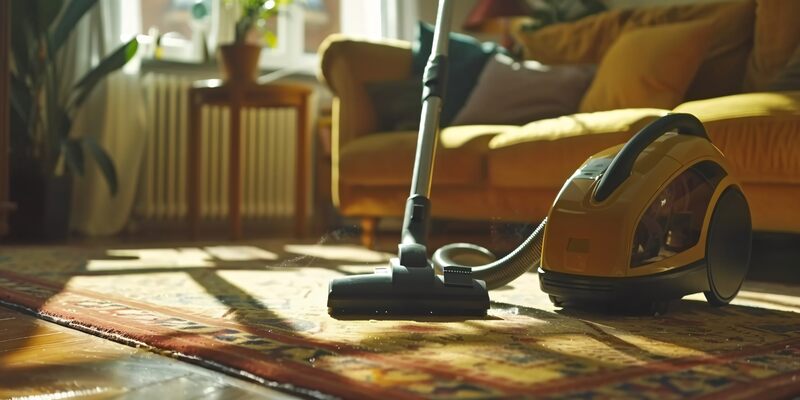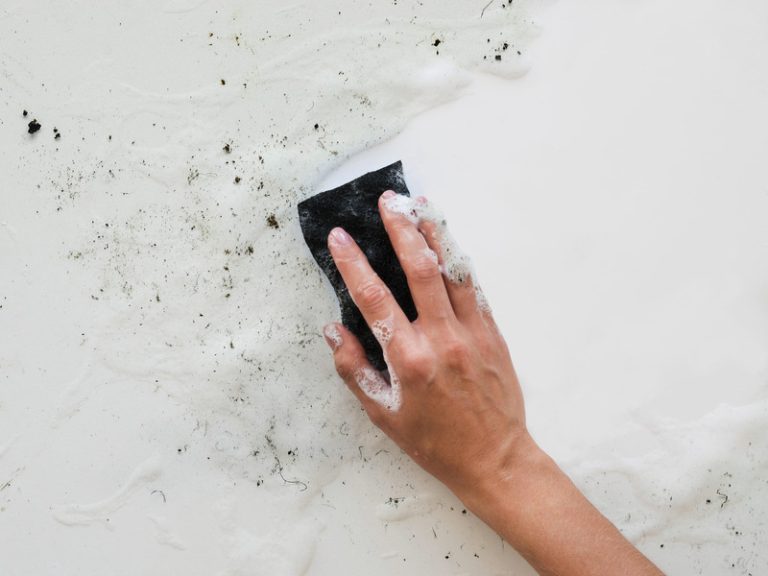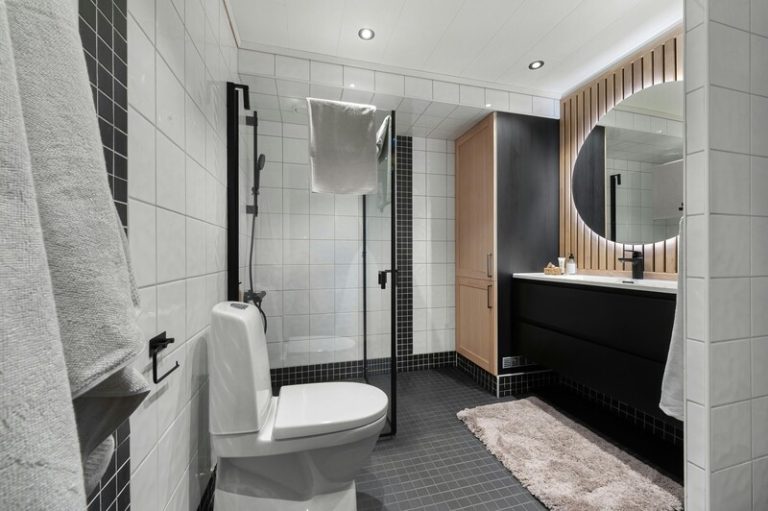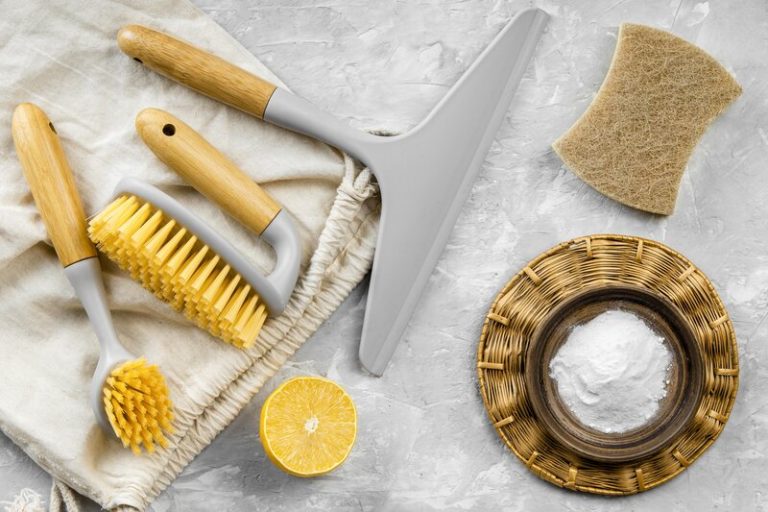Carpet cleaning is an important task that is often overlooked, but its importance cannot be overstated. From visible stains to foul odours, there are several signs that indicate when to clean a carpet.
We will discuss the signs your carpet needs to be cleaned, how often carpet cleaning should be done, various cleaning methods, factors to consider before cleaning, and tips on keeping carpets clean.
Let’s dive in and learn more about when to clean carpet to keep it fresh and in top condition.
The Importance of Cleaning Carpet
Before diving into how often to clean a carpet at home, firstly, it’s important to understand the importance of this activity.
Cleaning carpet is crucial for maintaining a healthy indoor environment and extending the lifespan of your carpet.
Regular cleaning helps to remove dirt, dust, allergens, and bacteria trapped in the carpet fibres, promoting better air quality and reducing health risks. Cleaning can prevent the breakdown of carpet fibres and backing, preserving the overall appearance and functionality of your carpet.
Regular vacuuming is a simple but effective way to keep your carpets clean on a day-to-day basis. By removing surface dirt and debris regularly, you can prevent them from sinking deeper into the carpet fibres and causing damage.
Over time, dirt buildup can not only make your carpet look dingy but can also accelerate wear and tear. In addition to vacuuming, professional deep cleaning at least once a year is recommended to target embedded dirt and allergens that regular household cleaning may not reach.
When to Clean Carpet?
Basically, to determine how often to clean a carpet professionally, there are some signs that indicate your carpet needs cleaning. These signs are very important to maintain a healthy living environment, which includes:
a. Visible Stains and Spills
Visible stains and spills on your carpet can be a clear indicator that it is time for a thorough cleaning. Whether it’s from accidental spills or tracked-in dirt, addressing these stains promptly with a suitable carpet stain remover can help maintain the carpet’s appearance and cleanliness.
Ignoring these stains can lead to them setting in and becoming more challenging to remove, potentially causing permanent damage to the carpet fibres. Different types of stains, such as coffee, wine, or pet urine, require specific stain-removal techniques. For example, dabbing a mixture of water and vinegar on a fresh stain can be effective, while using a commercial carpet stain remover might be necessary for tougher stains.
Regularly cleaning and treating stains promptly not only preserves the carpet but also extends its lifespan. Using professional cleaning services periodically can ensure a deeper and more thorough cleaning, further enhancing the appearance and longevity of your carpet.
b. Foul Odour
A persistent foul odour emanating from your carpet can signal the presence of trapped dirt, spills, or pet stains that have not been adequately cleaned. Eliminating these odours through professional cleaning or DIY odour removal methods is crucial to restoring a fresh and healthy indoor environment.
Trapped dirt and spills can seep deep into the fibres of your carpet, harbouring bacteria and mould that are notorious for causing unpleasant odours. Similarly, pet accidents can leave behind lingering smells that worsen over time if not properly addressed.
One effective way to combat these odours is to regularly vacuum and steam-clean your carpet to remove any accumulated debris and bacteria.
For specific stains, using vinegar and bicarbonate of soda solution can help neutralise odours and lift stubborn residue.
Alternatively, professional carpet cleaning services employ specialised equipment and solutions to thoroughly sanitise and deodorise your carpet.
By tackling the root causes of foul odours, you can enjoy a fresh and inviting living space once again.
c. Allergies and Respiratory Issues
The onset of allergies or respiratory issues among occupants can be linked to the accumulation of dust, pet dander, and allergens in the carpet fibres. Regular cleaning and maintenance can help reduce these triggers, creating a healthier indoor environment for everyone.
When left unchecked, dirty carpets can serve as breeding grounds for bacteria and mould, further exacerbating respiratory conditions and allergies. The trapped particles in the carpet can get kicked up into the air with each step, leading to increased exposure. This prolonged exposure to airborne irritants can cause irritation in the airways, triggering asthma attacks and other respiratory troubles. Regular cleaning not only improves the aesthetics of the space but also plays a key role in safeguarding the health of individuals within the premises.
d. High Foot Traffic
Areas of the carpet experiencing high foot traffic are prone to accelerated wear and dirt accumulation, making regular cleaning essential to maintain the carpet’s appearance and longevity. By addressing these high-traffic areas promptly, you can prevent permanent damage and extend the life of your carpet.
High foot traffic not only affects the aesthetics of your carpet but also impacts its structural integrity over time. Without proper maintenance, fibres can break down more quickly, leading to noticeable wear patterns and a worn-out look. To combat this, it is crucial to implement a regular cleaning routine that includes vacuuming and professional deep cleaning. Utilising area rugs or carpet runners in heavily trafficked zones can help distribute the pressure and minimise direct wear on the carpet fibres, prolonging its lifespan.
How Often Do You Need to Clean Carpets?
Now that you know some of the signs that can help pinpoint when to clean a carpet, it’s time to understand how often a carpet needs cleaning. Basically, the frequency of cleaning your carpet depends on various factors, including:
a. Depends on Usage
The frequency of cleaning your carpet is largely dependent on the level of usage it experiences. Carpets in high-traffic areas or homes with pets may require more frequent cleaning to maintain their appearance and hygiene.
High levels of foot traffic can grind dirt and debris deep into the carpet fibres, making it harder to remove with regular vacuuming. In such cases, it is recommended to clean the carpet at least once every 6-12 months to prevent permanent damage and odours. For homes with pets, especially those prone to accidents, regular spot cleaning and professional carpet cleaning every 3-6 months may be necessary to eliminate stains and bacteria effectively.
b. Recommended Frequency
For optimal carpet maintenance, it is recommended to steam clean carpets every 6 to 12 months, depending on usage and household conditions. Scheduling professional cleaning services every 12 to 18 months can help remove deep-seated dirt and allergens.
Regular steam cleaning not only maintains the appearance of your carpets but also plays a crucial role in extending their lifespan. It eliminates bacteria, dust mites, and other contaminants that may be lurking within the fibres, thus providing a cleaner and healthier indoor environment.
On the other hand, professional carpet cleaning services go beyond surface-level dirt removal, targeting stubborn stains and deeply embedded pollutants securely. By combining both steam cleaning and professional services, you ensure that your carpets remain fresh, hygienic, and visually appealing for a long time.
The Different Methods Of Cleaning Carpet?
Cleaning carpets can be done through various methods, each offering unique benefits based on the carpet type and cleaning requirements, such as:
a. Steam Cleaning
Steam cleaning is a popular method for deep cleaning carpets using steam mops and natural cleaning agents like distilled white vinegar. This approach effectively removes dirt, stains, and allergens from the carpet fibres, leaving behind a fresh and sanitised surface.
The process of steam cleaning involves the use of high-temperature steam from the mop to penetrate deep into the carpet fibres, loosening dirt and grime that regular vacuuming might miss.
The heat from the steam not only cleans but also disinfects, killing bacteria and germs lurking within the carpet. Eco-friendly solutions like distilled white vinegar add an extra cleaning boost while being safe for both your carpets and the environment.
b. Dry Cleaning
Dry cleaning is a method that uses minimal moisture and specialised cleaning agents to remove dirt and stains from carpets. This approach is suitable for delicate carpet fibres or areas that require quick drying times, making it a convenient option for regular maintenance.
One of the key benefits of dry cleaning is its ability to deeply cleanse carpets without saturating them with excessive water, which can sometimes lead to mould or mildew growth.
The use of specialised cleaning agents in the dry cleaning process ensures that tough stains are effectively removed without causing damage to the delicate fibres of the carpet.
The low moisture content also helps in preventing shrinkage or colour bleeding, which are common risks associated with traditional wet cleaning methods.
c. Shampooing
Shampooing carpets involves using specialised carpet shampoos and scrub brushes to deep clean and refresh the carpet fibres. This method effectively removes dirt, stains, and odours, leaving the carpet looking and smelling clean.
When shampooing carpets, it is important to start by vacuuming the carpet to remove loose dirt and debris. Carpet shampoos are specifically designed to penetrate the carpet fibres and break down tough stains. Using a scrub brush, work the shampoo into the carpet using circular motions for a thorough cleaning.
One of the key benefits of using a scrub brush during shampooing is that it helps to agitate the carpet fibres, allowing the shampoo to reach deep within the carpet and lift out embedded dirt and grime. This deep cleaning process not only improves the appearance of the carpet but also helps to eliminate any lingering odours, leaving your space fresh and clean.
d. Bonnet Cleaning
Bonnet cleaning is a surface cleaning method that involves using a rotating bonnet pad to absorb dirt and debris from the carpet surface. While it provides quick results, bonnet cleaning is best suited for interim maintenance and may not address deep-seated stains or odours.
One of the advantages of bonnet cleaning is its ability to quickly refresh the appearance of carpets by capturing surface dirt effectively. The process involves a cleaning solution sprayed onto the carpet, followed by the bonnet pad that absorbs the loosened dirt. This method is popular in commercial settings where carpets need regular maintenance without much downtime.
However, bonnet cleaning has limitations when it comes to dealing with stubborn stains or odours that have penetrated deep into the carpet fibres. The process mainly focuses on the top layer, making it less effective for thorough stain removal.
Factors To Consider Before Cleaning Your Carpet
While understanding when to clean your carpet is important, there are also some factors to consider before cleaning it, including:
a. Type of Carpet Material
The type of carpet material influences the cleaning method and products that should be used to ensure effective cleaning without damaging the fibres. Different carpet materials such as wool, nylon, or polyester may require specific cleaning techniques tailored to their unique characteristics.
For instance, wool carpets are known for their natural durability and luxurious feel, but they are also more prone to shrinking and colour bleeding if not cleaned properly. When cleaning wool carpets, it’s essential to use gentle cleaning solutions and avoid excessive moisture to prevent damage to the delicate fibres.
On the other hand, nylon carpets are highly resilient and easy to clean, making them suitable for high-traffic areas. Nylon fibres can attract oil-based stains more easily, requiring a targeted approach using specialised stain removers.
Polyester carpets, while being stain-resistant and affordable, can flatten over time if not cleaned correctly. Cleaning polyester carpets involves regular vacuuming to maintain their appearance and periodic deep cleaning to remove embedded dirt.
b. Type of Stains and Spills
The type of stains and spills present on the carpet will determine the appropriate cleaning approach and products needed for effective removal. Whether dealing with food stains, pet accidents, or oil spills, using the right carpet stain remover and cleaning technique is essential for achieving optimal results.
For food stains, immediate action is crucial to prevent them from setting in. Blot the affected area gently with a clean cloth and apply a carpet stain remover specifically designed for food spills.
Pet accidents may require enzyme-based cleaners to effectively neutralise odors and stains.
Additionally, oil spills can be tricky to tackle, so using a specialised carpet stain remover for oil-based stains is recommended. Remember always to test any product on a small, hidden area of the carpet first to ensure it doesn’t cause discolouration.
c. Budget and Availability
Considering your budget and availability of cleaning services is vital when planning carpet maintenance. Whether opting for DIY cleaning solutions or professional services, aligning your budget with the cleaning frequency and methods can help you maintain a clean and healthy carpet within your means.
It’s essential to evaluate the financial aspect of carpet cleaning as it directly impacts the level of maintenance you can afford. By being conscious of budget constraints, you can make informed decisions on whether to invest in high-quality professional services that may be costlier but more effective, or opt for budget-friendly DIY methods. Availability of time and resources also plays a crucial role in choosing the right cleaning approach, as DIY methods may require more time and effort compared to hiring professionals.
Tips To Maintain A Clean Carpet
Whilst it’s good to know when to clean carpets, it’s also good to know some tips on how to maintain carpet cleanliness. Maintaining a clean carpet requires a proactive approach that includes:
a. Regular Vacuuming
Regular hoovering is essential for removing surface dirt, dust, and allergens from the carpet, preserving its appearance and hygiene. Using a hoover with proper attachments and occasionally employing a microfibre cloth for spot cleaning can help maintain a clean and fresh carpet surface.
When hoovering, it’s crucial to pay attention to high-traffic areas and under furniture, as these spots tend to accumulate more dirt and debris.
Consistent hoovering not only enhances the longevity of the carpet but also improves indoor air quality by reducing allergens that can trigger respiratory issues.
Make sure to adjust the height of the hoover based on the carpet pile to ensure efficient dirt removal. Combining hoovering with periodic steam cleaning can penetrate deeper into the carpet fibres, removing stubborn stains and bacteria.
b. Immediate Stain Removal
Prompt stain removal is crucial to prevent permanent damage to the carpet fibres and backing. Using a suitable stain remover and blotting the affected area with old towels can help lift stains effectively and preserve the carpet’s cleanliness and appearance.
Immediate action is key in dealing with carpet stains. Addressing spills promptly can prevent them from setting in and becoming more stubborn to remove.
Remember, different stains may require specific treatments; for instance, pet stains might need enzymatic cleaners, while grease stains may benefit from a gentle dish soap solution.
It’s essential to test any cleaning solution on a small inconspicuous area first to ensure it doesn’t cause discolouration. Always remember to blot rather than rub when cleaning stains to avoid spreading the discolouration further.
c. Professional Cleaning
Engaging professional carpet cleaning services on a periodic basis can deep clean the carpet, removing embedded dirt and allergens that regular maintenance may not address. Professional cleaners use specialised equipment and expertise to rejuvenate the carpet and ensure a thorough cleaning process.
One of the significant benefits of opting for professional cleaning for your carpet is the unmatched level of deep cleaning it provides.
By harnessing specialised tools and techniques, professional cleaners can penetrate deep into the carpet fibres, extracting ground-in dirt and allergens that regular vacuuming may miss. This meticulous approach not only enhances the appearance of the carpet but also contributes to a healthier indoor environment, especially for individuals sensitive to allergens.
Now you know when to clean a carpet, right? Not only that, the above explanation also covers the cleaning methods and some tips that can be used to maintain a clean carpet. However, why don’t you take it a step further by ensuring your carpet receives the best care possible?
TEKA Cleaning specialises in professional carpet cleaning services that go beyond regular vacuuming. Our partnership with Karcher ensures we use the latest equipment for the most effective deep cleaning, removing not just dirt but also potential allergens and extending the life of your carpets.
Carpets, especially in high-traffic areas, can harbour deep-seated dirt and allergens that standard cleaning methods often can’t reach. Our advanced techniques not only clean but also refresh your carpets, making your living space healthier and more inviting.
So, why wait? Book now or give us a call at 01233 751 544 and allow the professionals at TEKA Cleaning to rejuvenate your carpets. Experience the peace of mind that comes from knowing your carpets are impeccably clean and maintained, ensuring a healthier home environment.
Trust TEKA Cleaning to bring out the best in your carpets, and see why we’re the trusted choice for carpet cleaning services in Cambridge and beyond. Contact us today!
Read also:











